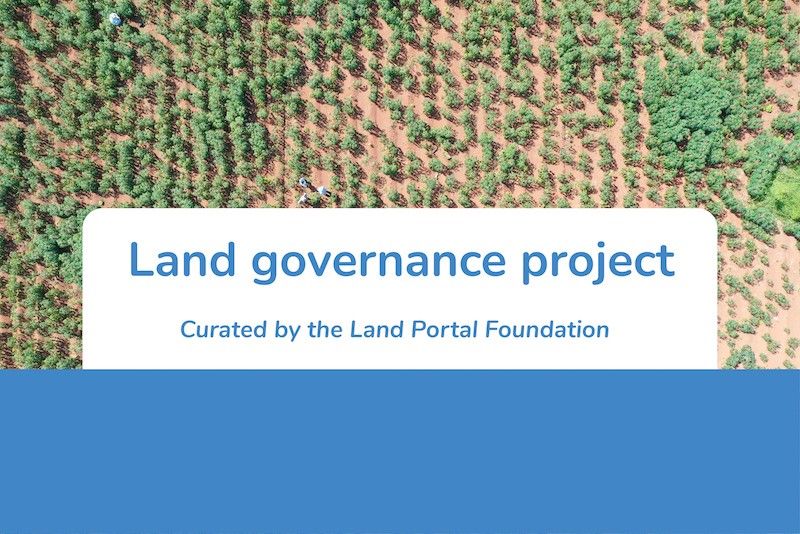Community / Land projects / Enabling a policy environment for integrated natural resources management and implementation of an integrate
Enabling a policy environment for integrated natural resources management and implementation of an integrate

€1505504.877
06/20 - 05/25
Actief
This project is part of
Implementing Organisations
Donors
Data Providers
Objectives
To support and scale up the introduction of innovative climate-smart agriculture practices, and sustainable forest and land management to achieve LDN
Other
Note: Disbursement data provided is cumulative and covers disbursement made by the project Agency.
Target Groups
Socioeconomic benefits supporting the achievement of global environment benefitsThe first socioeconomic benefit to be generated by this GEF-FAO project is the promotion of gender equality and the empowerment of women. Women will obtain improved abilities in climate resilient practices to boost land productivity as well as crop production. Outcome 2.2 will guarantee the achievement of this first socioeconomic benefit.In the second place, the increase of household incomes will be another socioeconomic benefit to be generated. This includes female-headed households. This income increase will be the result of strengthening farmer’s resilience to extreme weather, considering that their income depend essentially on weather fluctuations. Under Component 2, Climate Smart Agriculture practices such as no-till farming, maintenance of continuous soil cover, alternating crops and sustainable shelterbelt management will enhance resilience to climate change. Following, income increase will be achieved through land degradation prevention; after all, land degradation is responsible for reduced productivity due to a lower response to the same inputs, and a need for higher inputs to maintain farm incomes. Moreover, income sources from LDN with the Government encompass the establishment of Chambers of Agriculture which would represent the interest of farmers to public authorities, as well as Government grants and incentives. The private sector can also intervene via loans. Lastly, widened market access through activities implemented under Output 2.2.1 and cooperation with the World Bank Agriculture Competitiveness project should ensure an income increase for farmers.On a tertiary basis, this project should bring about an increase of income at regional level as well as at sectoral level (agricultural sector), as another socioeconomic benefit. As stated in the previous paragraph, income sources from LDN can be created cooperatively with the Government, as well as local Governments.Lastly, the improvement of socioeconomic benefits in the rural areas could help reduce rural-urban migration.This Project, trough the delivering of these four above-mentioned socioeconomic benefits, will support the achievement of the following global environment benefits: First off, this Project will improve the provision of ecosystem services from 92,000 ha of degraded agricultural land and shelterbelts. These ecosystem services include the increase of productivity and reduction of soil erosion and subsequently scaling them up across the country.In the second place, this Project will reduce rural poverty by decreasing vulnerability of farmers and agricultural workers towards land degradation, extreme weather and climate events given the fact that their income depend mostly on weather fluctuations.Ultimately, this Project will support local value chains, focusing on activities engaging women.Climate Change adaptation related benefitsThis project involves a variety of climate change adaptation related activities, namely, generating information and knowledge, capacity development, planning and, ultimately, putting into effect climate change adaptation actions on the lookout for reducing the vulnerability of human/natural systems to the impacts of climate change.In relation to information and knowledge generation, this GEF-FAO proposal is associated to the baseline IDA/WB “Disaster and climate risk management” project and will benefit from the knowledge on the use of weather information in farming operations. Moreover, under Output 1.1.2, the GEF-FAO proposal will assess and outline natural or anthropic factors affecting soil fertility, which may include climate change effects: “climate is one of the most important factors affecting the formation of soil with important implications for their development, use and management perspective with reference to soil structure, stability, topsoil water holding capacity, nutrient availability and erosion”[1]. Furthermore, Output 1.1.3 will generate information and emphasize forms and locations of soil degradation by implementing a local system of soil quality monitoring.Next in order, concerning capacity development, this GEF-FAO project will coordinate with the IFAD baseline project “Climate Resilience through Conservation Agriculture” which seeks to enhance the adaptive capacity of farmers to climate change via the promotion and expansion of resilient agricultural approaches. In addition, under Output 1.1.1, staff from MARDE, IPASP and MoldSilva will be trained in INRM and LDN principles. Subsequently, Output 3.2.1 involves capacity building in replicating the planning and monitoring of SLM, agroforestry and CSA practices. Essentially, Components 1 and 2 will provide capacity development in the pilot area, while Component 3 provides capacity building to replicate these experiences carried out in the pilot area up to national level.As for planning activities concerning CCA, Output 2.1.1 will develop a participatory land-use planning in the agro-landscape. All types of land (agricultural land, pastures, and shelterbelts) will be assessed so LDN targets (which can simultaneously contribute to climate change adaptation) and plan interventions can be determined. Subsequently, Output 3.2.1 will replicate planning and monitoring of SLM from the Project area to other locations. Lastly, regarding the implementation of climate change adaptation actions. First of all, the GEF-FAO Project will, under Output 2.2.2, carry out climate resilient practices to facilitate adaptation of agricultural livelihoods to climate change. In this regard, Women’s Associations will be trained on gender-sensitive climate resilient practices to enhance land productivity. Secondly, this GEF-FAO Project will also be collaborating with the CPIU-IFAD Rural Resilience Project, which seeks to diversify agricultural production through the allocation of grant funding for adaptation technologies. Crop Rotation is also part of the catalog of agricultural related adaptation strategies to be implemented under Output 2.1.2. that can improve productivity. In the third place, the Institute of Crop Production and the Institute of Horticulture will be choose and introduce drought tolerant varieties of wheat, corn and apples. Moreover, the Project will also apply, under Output 2.2.2, drip irrigation (trickle irrigation) as a water saving irrigation method. In the fourth place, seedling nurseries will be established under Output 2.1.2 in order to cultivate and distribute climate-resilient seeds. This Project, under Output 2.2.2, also foresees the use of drought tolerant seeds. The fifth kind of activity involve the implementation of a monitoring system of soil quality that could avoid crop loss through climate-related stress. The last example of CCA action is the plantation and rehabilitation of wind shelterbelts to significantly reduce soil erosion under Outcome 2.1. [1] Rajib Karmakar, Indranil Das, Debashis Dutta and Amitava Rakshit, 2016. Potential Effects of Climate Change on Soil Properties: A Review. Science International, 4: 51-73.




